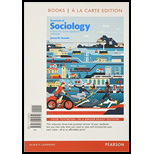
Concept introduction:
Very often, people do not agree with a social policy or practice and turn to groups that promote violent or negative ways to make change.
Explanation of Solution
Suggested response:
Radicalization is a response way beyond attempting to make change in a positive manner. It is vital to reach a person before he or she becomes radicalized. The person may want to keep his or her extreme ideas, but it is important to explain that violence is not necessary to achieve his or her goals. Consider how you have learned that this activity usually occurs when people find those with similar thoughts and they work as a group to devise a plan. Now think about how productive they could be if they put that effort toward a nonviolent action to make change. It is important that teachings such as those found in the Koran are not misinterpreted. Educating people on the idea that, as a group, they can be agents of change but that it must be done in a positive way without violence, has to occur at the very early stages of group formation.
Want to see more full solutions like this?
Chapter 11 Solutions
Essentials of Sociology
- Individual Assignment: Reflection – -40% (Unit 1, 2, 9) The basic concept behind CSE is that it enables young people to make informed decisions about their health. Research shows that youth who complete secondary and higher education have better reproductive health outcomes and are more likely to have higher socio-economic status. According to UNESCO, CSE is an age-appropriate, culturally relevant approach to teaching about relationships by providing scientifically accurate, realistic, non-judgemental information. Caricom Today has reported that the Caribbean needs to do better when it comes to CSE. A recent Formative Assessment Report (conducted in 2022) highlighted that no Caribbean country is truly offering what could be considered CSE . Efforts to address this gap have been seen in the Health and Family Life Education (HFLE) Curriculum; however, the methods for delivery used are out of date, and too much of the specific content is left up to the individual teacher. Consider CSE in…arrow_forwardProfessor Genevieve Bell from Australian National University titled: 6 big ethical questions about the future of AI. (youtube, about 15 mins) Based on the video, Identify the (6) big ethical questions Prof. Bell wants you to know about the future of Artificial Intelligence (AI).arrow_forwardPartners in care website Partnersincare.org Identify (5) things you learned about Partners in Care by visiting their web site. (5 points) What are some basic ideas that first come to mind about Partners in Care need for volunteers? We will develop more ideas throughout the course. (5 points) Consider the following to create solutions for their volunteer needs (5 points): short-term (within the next 3 months) and long-term (within the next 2 years)arrow_forward
- "Digital transformation: are you ready for exponential change?" by Futurist Gerd Leonhard. Based on the video, what will become extremely valuable in the future? What are the 5 "human only traits" described in the video that will be even more important in the future because machines are great at simulating, but not being?arrow_forwardDEVELOPMENT OF ONE’S PERSPECTIVE OF SELF (EPAS 2.1.1.2, 2.1.1.3; EPAS 2.1.2.1, 2.1.2.3; EPAS 2.1.3.1; EPAS 2.1.6.1; EPAS 2.1.7.2; EPAS 2.1.8.2) This paper (aka Development of Self or DOS) is designed to help students begin to identify their own values, develop critical thinking skills in analyzing social and personal forces, demonstrates knowledge of the psychological forces that impact the individual, and identify their own assumptions of how people change. You are to describe your cultural background, values and beliefs associated with your group identities, and discuss how these attributes and dimensions of who you are influence your attitudes toward and interactions with others who are “different,” as well as their attitudes toward and interactions with you.1 In doing so, this assignment is an in-depth examination of the various micro-system issues related to human behavior and their impact on your personal development. This assignment requires you to write a critical…arrow_forwardPolitical factions consist of a-Like minded individual b-Opposing groups c-Political fragmentation d-Political fusionarrow_forward
- How are individual-level white collar crimes and corporate crimes similar? Please Include in thethe discussion on whether causal factors explain these crimes is similar. Please include references.arrow_forwardhumanized short answers- What strategies could be used to help students with hearing loss to access the curriculum? What strategies can be used to help students with hearing loss be a part of the classroom community?arrow_forwardshort simple humanized answer each- How did the field of deaf education evolve, and what is the history of the debate between oral and manual communication? How are the terms deaf and hard of hearing defined? What are some characteristics of children with hearing difficulties, and why must we consider the degree, type, and age of onset of the hearing loss? What are some causes of hearing loss? How is hearing loss detected, and why is early intervention so critical? How can varying hearing levels affect a student’s cognitive, academic, social, and language development, and what can be done to maximize a student’s communication potential? What kinds of educational responses are needed for students who are deaf and hard of hearing?arrow_forward
- Should U.S. foreign policy include provisions for reducing poverty in other nations of the world? Should U.S. domestic policy include provisions for reducing poverty in the United States? How are these issues similar? How are they different?arrow_forwardDiscuss Chapter 1 of Barry Glassner’s “The Culture of Fear.” Student’s may address but are not limited to discussing how the media uses individual scenarios to falsely give a wider perception of some kind, the media’ use of exaggerations and assertions and the financing of fear.arrow_forwardTake something (physical, personal or social) and change it. Tell us, what you started out with, what it looked like after you changed it, and what you did to make the change.arrow_forward
 Social Psychology (10th Edition)SociologyISBN:9780134641287Author:Elliot Aronson, Timothy D. Wilson, Robin M. Akert, Samuel R. SommersPublisher:Pearson College Div
Social Psychology (10th Edition)SociologyISBN:9780134641287Author:Elliot Aronson, Timothy D. Wilson, Robin M. Akert, Samuel R. SommersPublisher:Pearson College Div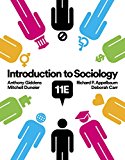 Introduction to Sociology (Eleventh Edition)SociologyISBN:9780393639407Author:Deborah Carr, Anthony Giddens, Mitchell Duneier, Richard P. AppelbaumPublisher:W. W. Norton & Company
Introduction to Sociology (Eleventh Edition)SociologyISBN:9780393639407Author:Deborah Carr, Anthony Giddens, Mitchell Duneier, Richard P. AppelbaumPublisher:W. W. Norton & Company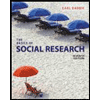 The Basics of Social Research (MindTap Course Lis...SociologyISBN:9781305503076Author:Earl R. BabbiePublisher:Cengage Learning
The Basics of Social Research (MindTap Course Lis...SociologyISBN:9781305503076Author:Earl R. BabbiePublisher:Cengage Learning Criminalistics: An Introduction to Forensic Scien...SociologyISBN:9780134477596Author:Saferstein, RichardPublisher:PEARSON
Criminalistics: An Introduction to Forensic Scien...SociologyISBN:9780134477596Author:Saferstein, RichardPublisher:PEARSON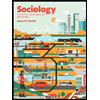 Sociology: A Down-to-Earth Approach (13th Edition)SociologyISBN:9780134205571Author:James M. HenslinPublisher:PEARSON
Sociology: A Down-to-Earth Approach (13th Edition)SociologyISBN:9780134205571Author:James M. HenslinPublisher:PEARSON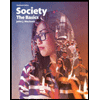 Society: The Basics (14th Edition)SociologyISBN:9780134206325Author:John J. MacionisPublisher:PEARSON
Society: The Basics (14th Edition)SociologyISBN:9780134206325Author:John J. MacionisPublisher:PEARSON





